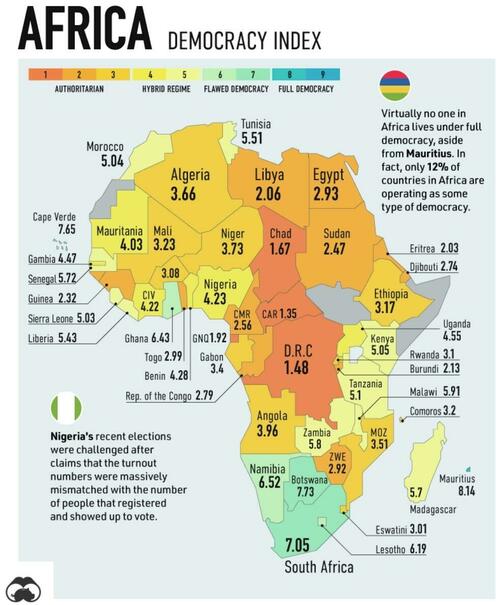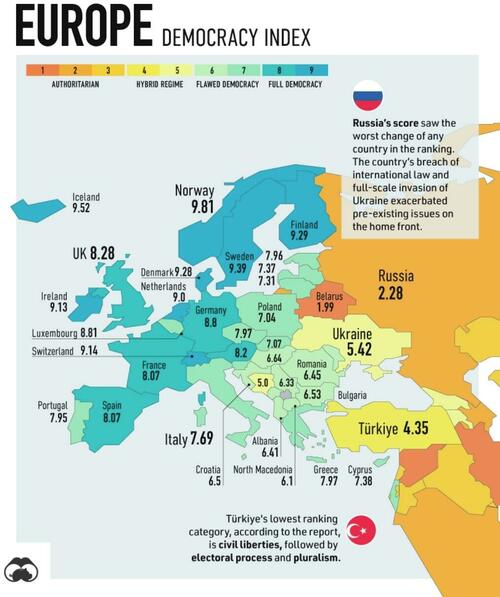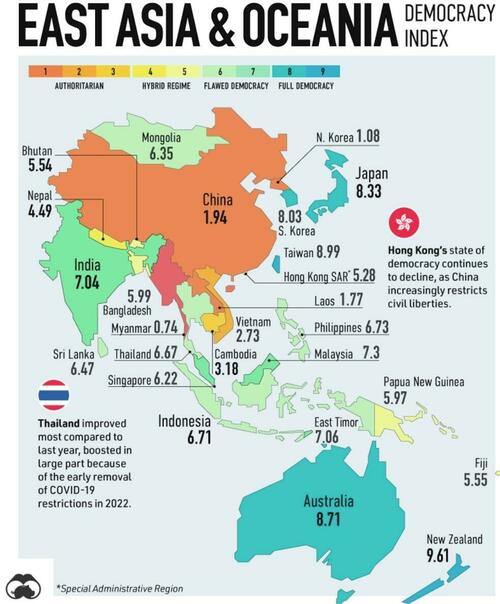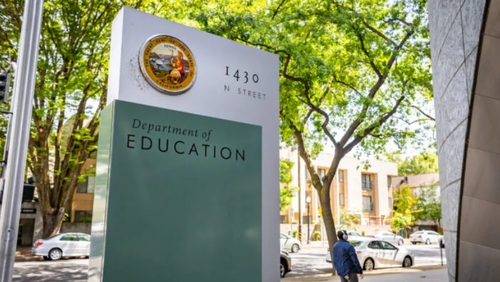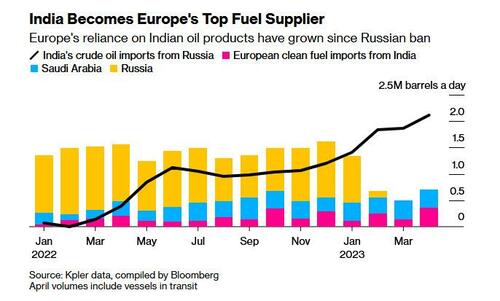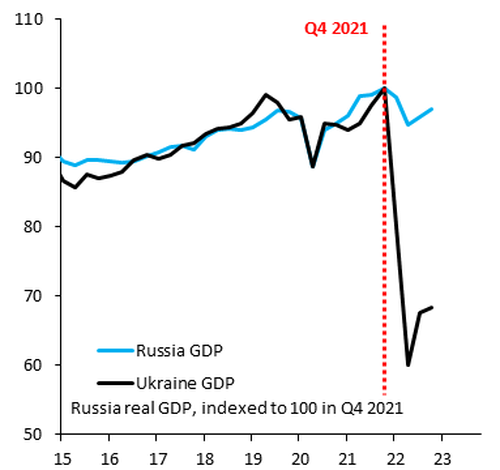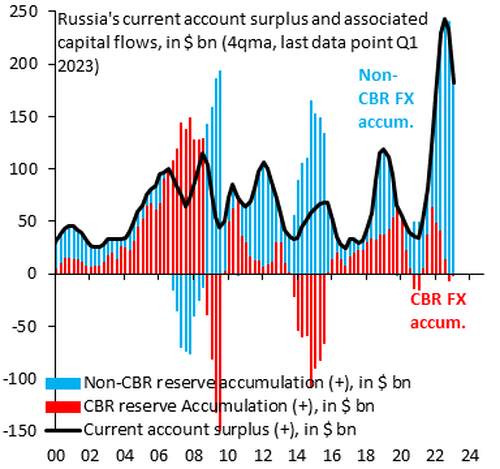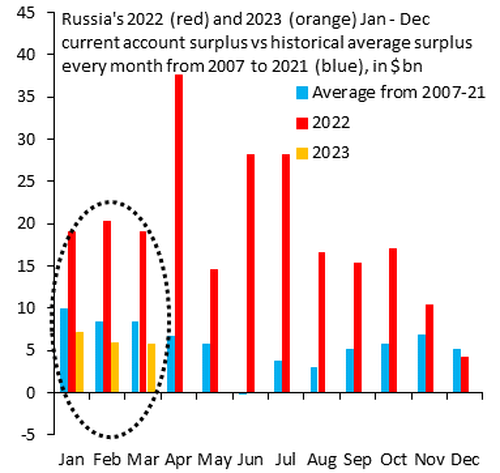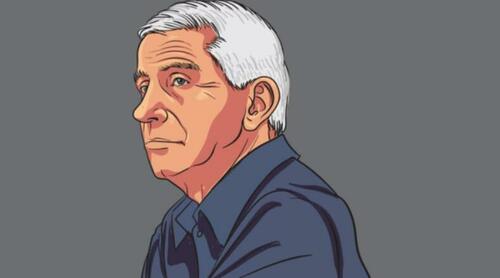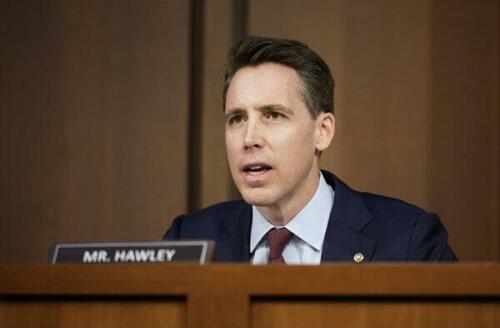Authored by MN Gordon via EconomicPrism.com,
According to this week’s Commerce Department report, U.S. GDP increased at an annualized rate of 1.1 percent during Q1 2023. The experts thought GDP would grow by 2 percent. They were wrong.
By now, it’s very well possible GDP has already slipped into reverse. We won’t know until the Commerce Department’s Q2 report is released in late July. In the interim, there’s an important question to be asked:
Is a recession bullish or bearish for stocks?
Next week, following the federal open market committee (FOMC) meeting on May 2 and 3, it’s widely anticipated that the Federal Reserve will hike interest rates by 25 basis points. This will take the federal funds rate to a range of 5.00 to 5.25 percent.
It is also anticipated that this will be the last rate hike of this rate hiking cycle. That the Fed will then hold interest rates, before cutting them later this year to offset the recession.
Interest rate cuts are commonly recognized as being bullish for stocks and stimulative for the economy.
Here at the Economic Prism, we have some reservations.
In short, we expect there will be a great stock market purge that will take the major indexes to unimaginable lows. We also expect this will coincide with the slashing and burning of interest rates. Here’s why…
The last time a Fed rate hike took the federal funds rate to 5.25 percent was June 29, 2006. If you recall, the Fed then paused and held the federal funds rate at 5.25 percent for roughly 15 months. Then on September 18, 2007, the Fed cut rates 50 basis points.
A lot happened beneath the surface over these 15 months when the federal funds rate was held at 5.25 percent. Massive stressors were formed, as this rate was relatively higher than the preceding years. In June 2003, for example, the federal funds rate touched 1.00 percent, and remained there until June of 2004.
Cheap Credit Spawns Bad Debt
When credit is cheap, opportunities to borrow and spend money are much more manageable. When interest rates are ultra-low, consumers, businesses, and governments can make their cash flow pencil out for purchases that would otherwise be extravagant.
But when the federal funds rate is 5.25 percent, and credit markets are tighter, the cash flow comes up short. Debts go unpaid and slip into arrears. Defaults occur.
Yet the effects of cheap credit spawning bad debt takes time to filter its way through the economy. Sectors that largely rely on financing to move products – such as real estate and automobiles – are generally hit first. While demand for bricks of dry ramen noodles, which even with today’s inflation can still be bought with pocket change, remains even.
When the Fed brought the federal funds rate to 5.25 percent in June 2006, and then signaled a pause, there was a sense of relief. Professional economists thought the worst of it had come and gone. They believed the stress of higher interest rates had already been realized.
In fact, on May 17, 2007, Fed Chair Ben Bernanke gave a speech before the Federal Reserve Bank of Chicago, where he said:
“The subprime mess is grave but largely contained. Given the fundamental factors in place that should support the demand for housing, we believe the effect of the troubles in the subprime sector on the broader housing market will likely be limited.”
Did he believe what he was saying? Because at the precise moment he spoke these words the nation’s housing market was rotting just beneath his nose. Did he not smell it?
Sowing the Seeds of Chaos
Apparently, Bernanke was missing his sense of smell. Because when Bear Stearns blew up in March 2008, Bernanke was again quick to dismiss it. On June 8, 2008, Bernanke, said:
“The risk that the economy has entered a substantial downturn appears to have diminished over the past month or so.”
At the same time, Bernanke was slashing the federal funds rate. Bringing it from 5.25 percent in September 2007 to a range of 0.00 to 0.25 percent by December 2008. Perhaps he thought this would buoy the economy and float stocks higher.
But then, on September 15, 2008, Lehman Brothers blew up and credit markets frosted over like the Alaskan tundra. Three days later Bernanke, along with Hank “my squirt gun’s a bazooka” Paulson, went to Congress and demanded a mega-bailout of the financial system.
On September 18, 2008, at an emergency meeting in the Capitol, Bernanke told Nancy Pelosi, Barney Frank, and Chris Dodd: “If we don’t do this tomorrow, we won’t have an economy on Monday.”
Two months after firing off Paulson’s bazooka, Bernanke commenced QE1. In doing so, he corrupted financial markets and the economy without end…and sowed the seeds of today’s financial and economic chaos.
Over this time, as the federal funds rate was being slashed and QE began flooding the financial markets with liquidity, the stock market didn’t go up. Instead, it went down.
The S&P 500, for example, peaked out at about 1,586 in October 2007. It then slowly slid down to about 1,200 in August 2008. Over this time, investors thought they were buying the dip. That the Fed had engineered a soft landing. They were dead wrong.
By September 2008, the S&P 500 was freefalling like common ravens descending upon fresh roadkill. Taking it down to a bottom of 666 on March 6, 2009. This amounted to a top to bottom decline of 58 percent. It was brutal. Yet it was also the buying opportunity of a lifetime.
What’s the point?
What the End of Fed Rate Hikes Means for Stocks
Here in the wooded mountains of East Tennessee the vegetated growth is so dense it shuts off the adjacent view. Hollers, as they’re called in southern Appalachia, are undetectable. And in an instant, things can go terribly wrong.
Take Dennis Martin, for instance. On June 14, 1969, he wandered off a Smoky Mountain trail never to be seen again. Approximately 1,400 search and rescue workers – including the National Guard, Green Berets, and Boy Scouts of America – walked narrow transects across a 56 square mile area.
All that was found were footprints leading to a stream, one shoe, and one sock. Martin vanished with hardly a trace.
Where did he go? Did a black bear eat him?
To this day, no one knows. It’s an unsolved mystery.
What to make of it…
As we’ve just documented, the Fed stopped hiking rates in June 2006. The S&P 500 continued to inflate until October 2007. The Fed then began cutting rates in September 2007. The stock market didn’t bottom out until March 2009 – 18 months after rate cuts were first initiated.
“History doesn’t repeat itself, but it often rhymes,” is a cliché that’s often attributed to Mark Twain. We don’t know if he actually said it. And we really don’t care. The insight, however, is edifying.
The stresses that are plaguing financial markets and the economy in 2023 are certainly different than those of 2008.
The world has dramatically changed over these 15 years. But if you listen with a trained ear, there are similar rhymes.
Namely, there’s massive amounts of bad debt out there that relatively higher interest rates over the past 14 months have exposed. The commercial real estate market is absolute toast. Pension funds, having stretched for yield, are holding a bag of assets that’s backed by eroding collateral. At the same time, the S&P 500 is still well overvalued relative to its historical mean.
By this, the likely end of the Fed’s rate hiking cycle next week does not mean we’re out of the woods. Rather, it means we’re just entering the woods…

And, assuming the Fed starts cutting rates in October of this year, the S&P 500 may not reemerge from the woods until it bottoms out in April 2025.
* * *
Like this article? If so, please Subscribe to the Economic Prism.






